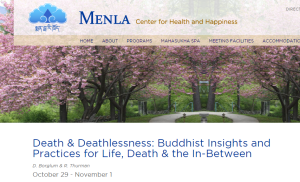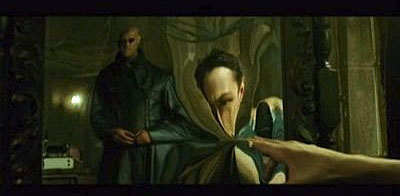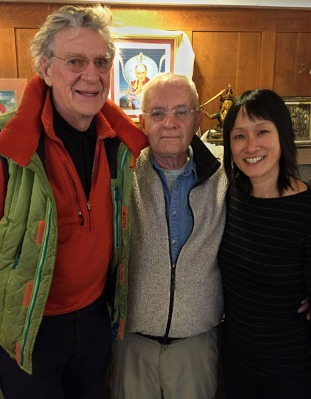This past weekend, I attended a retreat on death. Yes, I did.
You may think, what a bummer, why would anyone want to do that?
I chuckle thinking about the statement, “none of us are going to get out of this alive!” It’s the subtext in a thriller ethical moment of a novel or movie when a heroine or hero must make a death-defying sacrificial choice. A choice that will save the people in the story, and by viewer extension, that will ensure our own enduring survival. Live!
But seriously, setting drama aside, the truth is none of us are going to get out of this alive. When you truly think about the certainty of your own death and the death of everything around you, things change in proportion. Being alive and conscious seems miraculous and precious. It takes on a new landscape of awareness, possibilities, priorities, gratitudes, choices, etc. It’s like eating your same old favorite cake, which suddenly has a different flavor. It tastes lighter, and every time you sample it you enjoy it more. Not only that, you notice it looks amazing, you feel touched your thoughtful friend made it for you, or that the local shop had it on the shelf and you’re thankful you could buy it.

So I went to this retreat because the timing was right. I had realized very consciously that my own demise would come someday. I don’t know when (and I hope it will be when I’ve happily lived a long and fruitful life) but I decided I needed to sweep into some action and learn more about this mystery. What did wisdom traditions have to tell us?
“Death and Deathlessness: Buddhist Insights and Practices for Life, Death & the In-Between” was led by Columbia Professor Robert Thurman and Living/Dying Project Director Dale Borglum at Menla Mountain Retreat in Phoenicia, NY. It was based on Thurman’s translation of The Tibetan Book of the Dead, also known as The Great Book of Natural Liberation Through Understanding in the Between, and on Borglum’s work with the dying and their families.
Menla’s description was, “In this retreat we will explore what happens at the moment of death and beyond according to Tibetan Buddhist wisdom. This understanding will prepare us for a smooth transition, so that we may travel without fear to our next destination. This knowledge will also enable us to positively transform and uplift our day to day lives, infusing us with greater vitality as we approach the world.” Whoa, well, alright then!
So what did I learn? Here’s my takeaway summary. It all boils down to this: If you opt out of habitual ignorance and you recognize that all is impermanence through mindfulness practice, you come to intellectually know emptiness or selflessness–which may be called Buddha nature, or Christ mind, or Kingdom of God, Allah, Yahweh, Oneness, Pure Energy, and so forth, depending on your background. Then with great motivation developed, because you see and feel the preciousness of having been born with human consciousness in this life, you then work on kindness and serving others according to your abilities. This accomplishes cutting further at the root of self-attachment/cherishing/fixation/delusion so that you can realize consciously and sustainably more of who you really are in this life and beyond—Buddha nature or Clear Light. The dazzling, blissful light at the end of the tunnel which near death survivors often report seeing and are drawn towards is none other than your essence fully revealed.
So conscious living and dying go hand in hand.
Fascinating. Thurman says the Buddhist adepts were scientists at this. Tibetans are unique in preserving the original Indian teachings as well as continuing to empirically study, develop, refine, document, and create how-tos in support of this great transition from life to death to rebirth. He calls adventurers of the inner cosmos “psychonauts.” I like Thurman’s humor, scholarship, and insight. Psychonauts are analogous to the adventurers of the outer cosmos, Western astronauts. Both are heroic, daring discoverers of infinite realms—consciousness and outer space, respectively.
On the subject of in-between, this is the state commonly understood as the Tibetan idea of bardo, which is after physical death but before reincarnation. However, as The Tibetan Book of the Dead clarifies, it’s actually all in-between. There are six in-between states, which in plain language are: 1. Life, 2. Dream state, 3. Studying/deep meditation state, 4. Death, 5. Bardo, 6. Rebirth.
One should want to be prepared for dying, because it is inevitable, and life does not end with death. One would naturally want to have an auspicious rebirth, or as Thurman says, auspicious spiritual evolution. The deathlessness part is that consciousness endures, not as personality per se, but it endures, experienced in the dying process as great luminance, positive energy. Additionally, it is always present in all the other in-between states. It’s just that we don’t ordinarily experience or recognize it due to our habitual, conditioned minds which perceive conventional reality more saliently than Clear Light. The way to enlightenment therefore is to train our minds through meditation in combination with cultivating and enacting compassion in the world.
Thurman and Borglum complemented each other well in their presentations. Borglum’s sensitive teachings included sharing practices to live well and die well, how to help others through their deaths, incredible near death experiences by his clients, knowledge of current research on the dying process, as well as his own thoughtful and discerning meditation practice. Thurman read and commented on passages from The Tibetan Book of the Dead, first explaining its important historical context and the audience for whom it was originally written before launching into key excerpts and their meaning as understood in a contemporary context. As he himself said in a warm joking manner, Borglum’s on the ground experientially working with the dying and their families, and he’s in the academic tower working with philosophical and textual clarifications. I would say, however, that both teachers illuminated theory, as well as practical methods for living more fully and preparing for death.

Tibetan Book of the Dead, translated by Robert Thurman
If you have not read Robert Thurmans’ translation of The Tibetan Book of the Dead, I recommend you do. It is, no kidding, a how-to guide on the subjective stages of the dying process, what one will experience, the pitfalls to avoid as you evolve towards your next state or form. Better yet, attend a talk such as this one to get deeper into and beyond the words.
I must say, I did so enjoy Thurman’s engaging humor and sharp mind. Anecdotes included why he loved “The Matrix” movie because it showed Neo’s mirror image melding into his physical body such as may be the experience of dissolution in bardo; the account of a monk who was upset about Miss Piggy’s archetypal appeal to children due to its reincarnation implications, that they may be reborn as an animal, a lower self-directing consciousness; and that Yoda’s appearance and character was based on a Tibetan lama. He had a keen way of describing refined Tibetan connotations compared with Western orientations and mindsets. For example, he said karma is evolutionary causation, more radical than Darwin’s idea. That is to say, Darwinian evolution is driven by random genetic mutation, whereas Buddhist reincarnation or evolution is driven by karma, spiritual genetics at work. How we will be reborn depends on our aptitude, on ethical, mental, emotional, and other levels–permitting a great deal more complexity and possibility than chance or meaningless accident according to a materialist view.

Neo probes the mirror in The Matrix
So, Robert Thurman said, there is no other sensible purpose to this life but to open to the luminosity of life, i.e., letting go of material things opens you, being ethical and helping others opens you, forgiving and letting go of hurt opens you, meditation and critical thinking opens you…
I left the retreat feeling elated from not only the vital teachings but also from the warm friendship I found with the other attendees and staff. This kind of experience is the real deal! With people who don’t skirt around the big issues–birth, life, death and beyond–but analyze, critique, deconstruct to experience for themselves whether Buddhist philosophy and teachings hold up. Mealtimes were golden opportunities to connect and ask questions more casually and individually of Thurman and Borglum, or Bob and Dale as we came to know them.

Robert Thurman, Dale Borglum, Eva Lee at Menla Mountain Retreat’s “Death & Deathlessness: Buddhist Insights and Practices for Life, Death & the In-Between”
Learn more about these two incredible and insightful teachers:
Dale Borglum is the Executive Director of the Living/Dying Project in Santa Fe and since 1986 in the San Francisco Bay Area. He is the co-author with Ram Dass, Daniel Goleman and Dwarka Bonner of Journey of Awakening: A Meditators Guidebook, Bantam Books and has taught meditation since 1974. Dale lectures and gives workshops on the topics of meditation, healing, and spiritual support for those with life-threatening illness, and on caregiving as spiritual practice. He has taught with Ram Dass, Stephen Levine, Joan Halifax, Joanna Macy, Jack Kornfield, Annie Lamott, Jai Uttal and many others. He has a doctorate degree from Stanford University.
Support Living/Dying Project, their worthy and much needed work by donating or training to become a volunteer. For more information, please visit http://livingdying.org/.
Living/Dying Project, P.O. Box 357, Fairfax, CA 94978 Tel: 415.456.3915 info@livingdying.org
Robert Thurman is Professor of Indo-Tibetan Studies at Columbia University, President of Tibet House U.S., a popular lecturer on Tibetan Buddhism, the translator of many philosophical treatises and sutras, and author of numerous books including the national bestseller, Inner Revolution: Life, Liberty, and the Pursuit of Real Happiness; Anger, the fifth book from a series on the Seven Deadly Sins, offered by The New York Public Library and Oxford University Press. His most recent book is titled Why the Dalai Lama Matters: His Act of Truth as the Solution for China, Tibet, and the World, published by Atria Books/Beyond Words.
Support Tibet House in preserving Tibet’s unique culture by becoming a member, donating, or volunteering. Please see www.tibethouse.us. Or visit Tibet House’s Menla Mountain Retreat for its teaching programs and healing spa services.
Tibet House, 22 West 15th Street, 2nd Floor, New York, NY 10011 Tel: (212) 807-0563 Menla Mountain Retreat, 375 Pantherkill Road, Phoenicia, NY 12464 Tel: (845) 688-6897

Menla Mountain Retreat, Spa, Phoenica, NY







